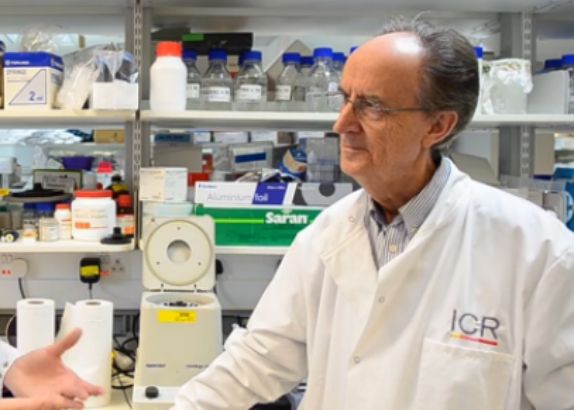26 February 2014
Skin cancer has usually been rejected as the most likely selective pressure for the development of black skin because of a belief that it is only rarely fatal at ages young enough to affect reproduction.
But a new paper, published in Proceedings of the Royal Society B, cites evidence that black people with albinism from parts of Africa with the highest UV radiation exposure, and where humans first evolved, almost all die of skin cancer at a young age.
The paper, by Professor Mel Greaves at The Institute of Cancer Research, London, cites studies showing that 80 per cent or more of people with albinism from African equatorial countries such as Tanzania and Nigeria develop lethal skin cancers before the age of 30.
Albinism is also linked to skin cancer in indigenous populations of other tropical countries with high, year-round UV exposure such as Panama.
Professor Greaves argues that the fact that people with albinism, which is caused by genetic changes that prevent the production of melanin, develop cancer at reproductive ages is indirect but persuasive evidence that early, pale-skinned humans were under strong evolutionary pressure to develop melanin-rich skin in order to avoid lethal skin cancer.
Genetic evidence suggests that the evolution of skin rich in eumelanin, which is brown-black in colour, occurred in early humans between 1.2 and 1.8 million years ago in the East African Savannah. Early humans having lost most of their body hair (probably to facilitate heat loss) probably had pale skin containing pheomelanin - like our nearest surviving relatives, chimpanzees. Pheomelanin, characteristic of white skin, is red-yellow and packaged into smaller stores under the skin than eumelanin, characteristic of black skin. Eumelanin provides a much more effective barrier against the DNA damage that causes skin cancers, providing almost complete protection.
Most scientists agree the development of black skin occurred in early humans primarily because of the ability of eumelanin to effectively absorb ultraviolet radiation, but they have debated exactly how this could have protected early humans against lethal diseases.
As well as affecting skin cancer risk, increased black melanin production could have given other benefits that helped individuals to pass on their genes to the next generation, such as preventing damage to sweat glands or the destruction of folate, which is important in foetal development.
While there could have been many benefits of having black skin in Africa (and retaining it in New Guinea), Professor Greaves argues that individuals with albinism and no protective benefit from melanin almost all die young from cancer.
Professor Greaves is Director of the new Centre for Evolution and Cancer at the ICR. The Centre aims to gain new insights into how individual cancers evolve – the process behind the development of drug resistance, and the often extraordinary genetic diversity within single tumours – and to uncover clues in our evolutionary history that could help us understand why human cancers develop.
Professor Greaves said: “Charles Darwin thought variation in skin colour was of no adaptive value and other investigators have dismissed cancer as a selective force in evolution. But the clinical data on people with albinism, particularly in Africa, provide a strong argument that lethal cancers may well have played a major role in early human evolution as an important factor in the development of skin rich in dark pigmentation - in eumelanin.”
For more information contact the ICR press office on 020 7153 5312 / [email protected]. For enquiries out of hours, please call 07976 751984.
Notes
- As humans migrated out of Africa north into Europe some 50-80,000 years ago, there was substantially less UV exposure and a selective advantage in having paler skin, probably to obtain more vitamin D.
- The skin cancers basal cell carcinoma (BCC), squamous cell carcinoma (SCC) and malignant melanoma (MM) are collectively the most common cancers of man. There is general agreement that excessive sun exposure is the major cause (acute for MM, chronic and sustained for BCC and SCC). White- or pale-skinned people are most at risk (1,000 times more than black people) and risk is related to modern lifestyle exposures. These conclusions are endorsed by genetic data showing that inherited gene variants associated with risk of skin cancers encode genes involved in melanin pigmentation.
